Why Supporting Organizations Is Vital Right Now
“It is art that makes life, makes interest, makes importance… and I know of no substitute whatever for the force and beauty of its process.” —Henry James
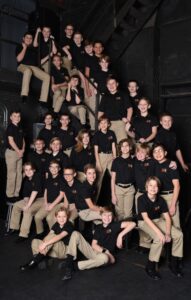 It’s hard to encapsulate, in a few words, how vital the arts are to the world, and maybe even more so to the small communities in which we live. The world of arts and culture is vast, and includes an array of drama, visual art, dance, music, and literature available in local theaters, museums, libraries, universities, performance halls, and more, as well as on radio and television.
It’s hard to encapsulate, in a few words, how vital the arts are to the world, and maybe even more so to the small communities in which we live. The world of arts and culture is vast, and includes an array of drama, visual art, dance, music, and literature available in local theaters, museums, libraries, universities, performance halls, and more, as well as on radio and television.
“The beauty of the arts scene here is that it is so vast,” George Tzougros, Executive Director of the Wisconsin Arts Board, says. “Each one of the cultures that makes up Wisconsin has its material and expressive ways of dealing with the universe, right? So if it’s the native people or the people who have just arrived in Wisconsin from somewhere in the world, they’re all bringing their culture with them. When we think about the arts at the arts board, we have a pretty panoramic family picture.”
In the Fox Cities, we’re surrounded by such diversity and the venues and organizations that tell those stories and make making art accessible a priority.
And while we see that enthusiasm and support every day, Wisconsin has historically ranked low in the nation in funding for the arts. In fact, “low” is an understatement.
“The statistics are staggering,” Hilary Armstrong, Executive Director of Appleton Boychoir, says. “Wisconsin ranks last in the United States for per capita arts funding, spending just 18 cents per person annually. This is significantly lower than neighboring states like Minnesota ($9.67 per capita) and Illinois ($5.11 per capita).”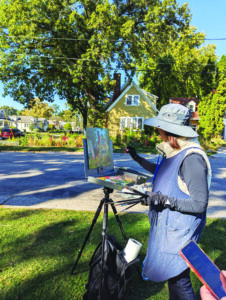
“We have seen a decrease in the annual State provided grants, and this has created a need to supplement our income with additional grants and private and corporate donations. I am hopeful that our local legislators will continue to push to increase state support of the arts. The state legislature has historically placed low importance on arts and culture funding. Budget priorities have typically focused on infrastructure, education and healthcare.
“Arts organizations in Wisconsin have come to depend heavily on private philanthropy for support. While we have been fortunate in our community to have businesses and individuals committed to the sustainability of our local arts organizations, the burden has been placed on private donors instead of equitable public funding as is seen in other states.”
Statewide Support for the Arts
“The US Department of Commerce has studied 35 different creative industries in the country and they have proved that in Wisconsin, those for 35 industries pack an $11.9 billion dollar economic punch,” Anne Katz, Executive Director of Create Wisconsin, says. “So all of those different businesses, for profit organizations, graphic design, media, architecture… 11.9 billion dollars worth of economic impact.
The above encompasses over 89,000 jobs, more than the beer, biotech and papermaking industries.
“We know we have a really good case to make that the state should be doing more to invest in the creative economy because that’s the economy of the future. We’re working hard on hopefully getting more funding for the arts through the Wisconsin Arts Board, getting more money for organizations like Appleton Downtown and other organizations and entities like the arts committee in Neenah,” Tzougros explains. “We’re also trying to reestablish the film industry. We’re getting a good response and we’re just gonna keep pushing.”
Create Wisconsin, the state’s leading (and only) independent community cultural development organization, is a catalyst and coalition activating and strengthening Wisconsin as a creative powerhouse locally and globally.
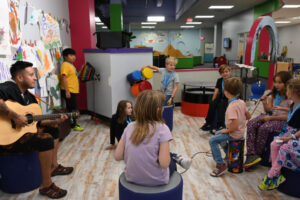 “We’re not a producing or presenting organization… we are a service organization,” Anne Katz, Executive Director of Create Wisconsin, says. “Plus, we work with local government, economic development, educators, politicians, everybody who cares about Wisconsin’s future. And we advocate and serve… so that means that we do everything from lobby the legislature for more funding to figuring out how to help an individual make their living as an artist.”
“We’re not a producing or presenting organization… we are a service organization,” Anne Katz, Executive Director of Create Wisconsin, says. “Plus, we work with local government, economic development, educators, politicians, everybody who cares about Wisconsin’s future. And we advocate and serve… so that means that we do everything from lobby the legislature for more funding to figuring out how to help an individual make their living as an artist.”
Create Wisconsin provides services and receives grants from the Packers Foundation and National Endowment for the Arts, as examples. But, most of their support comes from individuals and small businesses. Katz explains part of the organization’s mission is to help monetarily, but that it’s about much more.
“You know, it’s really bigger than that. We do a lot of work with local government and economic development people to sort of help make the case that the arts are essential to the economy and education and quality of life,” she says. “We do conferences and planning, and we just gave an award, actually, to 14 different communities in the state, including Appleton, for their public arts committees.”
The Creative Community Champion Award was awarded to Appleton’s Public Art Committee (APAC), an advisory committee in the city government that works to figure out programming, scholarships and unique ways to make public art happen.
“The mayor made a beautiful speech about why the arts were important in general, and why it was important for the city of Appleton to be involved in the arts.”
Create Wisconsin also helps funding for the Wisconsin Arts Board in its mission to make the arts and creativity accessible to everyone, everywhere in the state.
“The easiest way we describe ourselves is by the four Cs: creativity, culture, community and commerce,” Katz says. “Most people know us as a grantmaking entity, so funding organizations in your community. But we also help artists and arts organizations do what they want to do, whether that’s helping them with the money or with technical assistance or connecting them to other artists or arts organizations.
“We’re not the kind of state entity that comes in and says ‘I got an idea for you,’ but rather ‘What is it that you’re doing and how can we help?’”
“I do have to give Wisconsin credit for the arts support during COVID. We could not have survived the pandemic without the grants from the State of Wisconsin and the Wisconsin Arts Board,” Armstrong says. “The most significant example was the COVID-19 Cultural Organizations Grant program. This grant was administered by the Wisconsin Department of Administration, and provided grants to nonprofit organizations whose primary missions were to produce, present or exhibit cultural disciplines such as music, dance, theater, literature, and the visual arts, or items of environmental or scientific interest. The Wisconsin Arts Board also gave significantly more funds to help offset the Pandemic losses.”
Keeping the Arts Alive in the Fox Cities 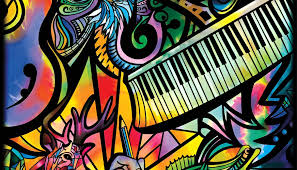
“I’ve spent a lot of time in the Fox Valley going to meetings, hosting meetings, talking to people about their issues, trying to figure out how to help,” Katz says. “The level of creativity that we have in Wisconsin is really astounding. People are making the arts happen without enough money, without enough time.”
“The Fox Valley region arts scene is diverse and welcoming, making it a cultural hub. Whether you’re an artist, a patron, or someone curious about exploring the arts, the Fox Cities have something to inspire and delight,” Armstrong agrees. “Supporting the arts doesn’t always require money—presence, advocacy, and enthusiasm can significantly contribute to fostering a thriving cultural environment.”
• Show up for local concerts, and other arts programs. Participation demonstrates demand and helps sustain artistic organizations.
• Donate time to arts organizations. Roles can include event staffing, marketing support, assisting with programs, or serving on boards. Volunteering builds capacity for small organizations with limited resources.
• Engage in advocacy by contacting policymakers to prioritize public arts funding. Share the economic and social benefits of arts investment with local and state representatives.
• Use social media platforms to highlight concerts and events. Word-of-mouth through posts or sharing event pages broadens awareness and encourages attendance.
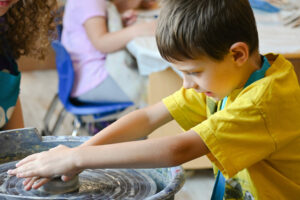
“Arts involvement is also linked to better grades and higher graduation rates. The arts are a significant contributor to local economies, generating jobs, tourism, and revenue. Vibrant arts scenes attract businesses, residents, and visitors, boosting community vitality,” Armstrong explains. “Art spaces often become focal points for community gatherings, education, and innovation. The arts celebrate and preserve the unique culture, traditions, and stories of a community, fostering a sense of identity and pride. Participation in, or exposure to the arts has also been known to reduce stress, enhance mood, and promote overall emotional well-being.
“The arts do much more than entertain; they enrich lives, foster unity, and empower communities to thrive economically, socially, and emotionally. A community that values and supports the arts is one that invests in a brighter, more connected future.”
Mark your calendars! The Appleton Boychoir will be collaborating with the Oshkosh Chamber Singers, an adult select ensemble, in The MasterWorks Concert on February 22 at 7 p.m. in Belfry Hall in Appleton.
“This concert will expose our boys and audience members to some of the grandest music ever written for singers and accompanying strings,” Armstrong says. “The program will feature works of Mozart, Michael Haydn, Salieri, and others. It will broaden the depth and range of our singer experience and will offer to the greater community an exciting opportunity to hear music largely written for a men and boys ensemble.”

